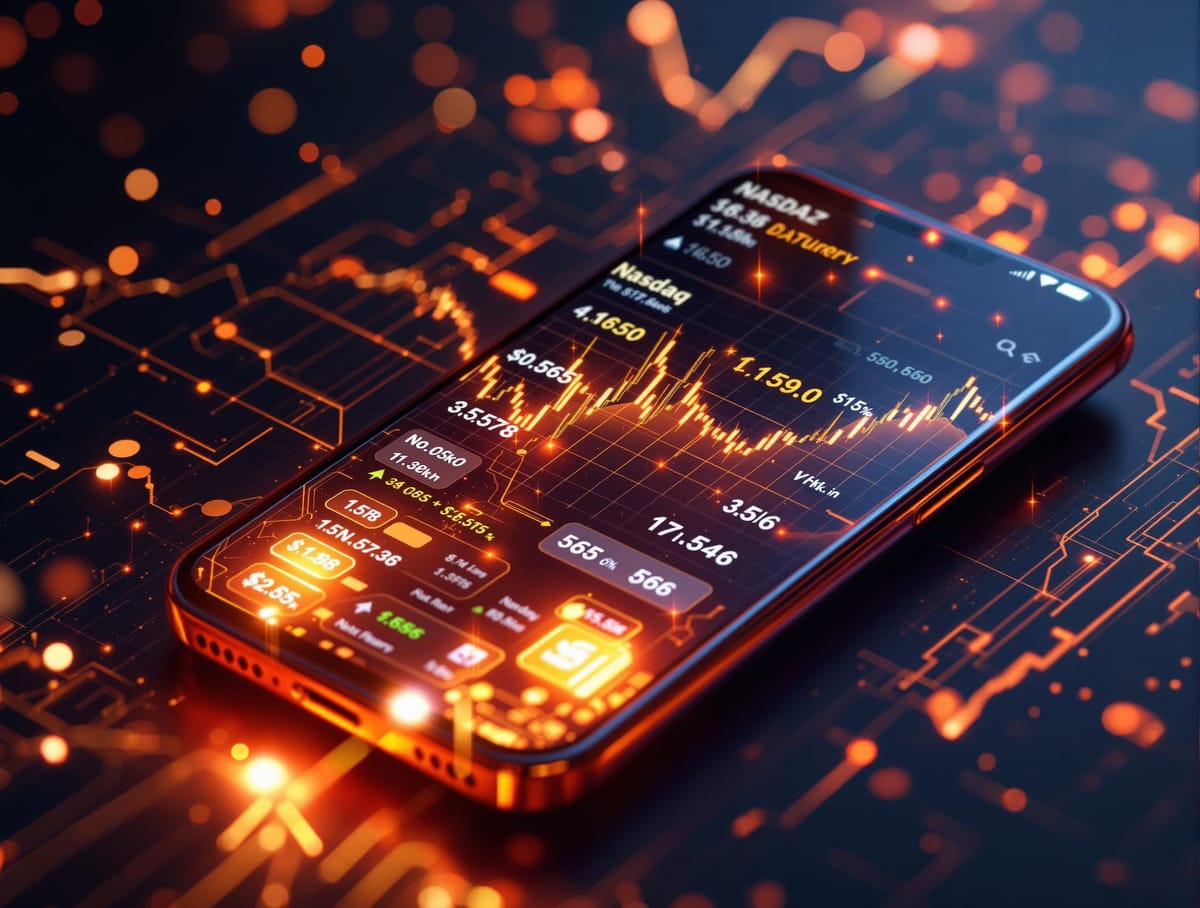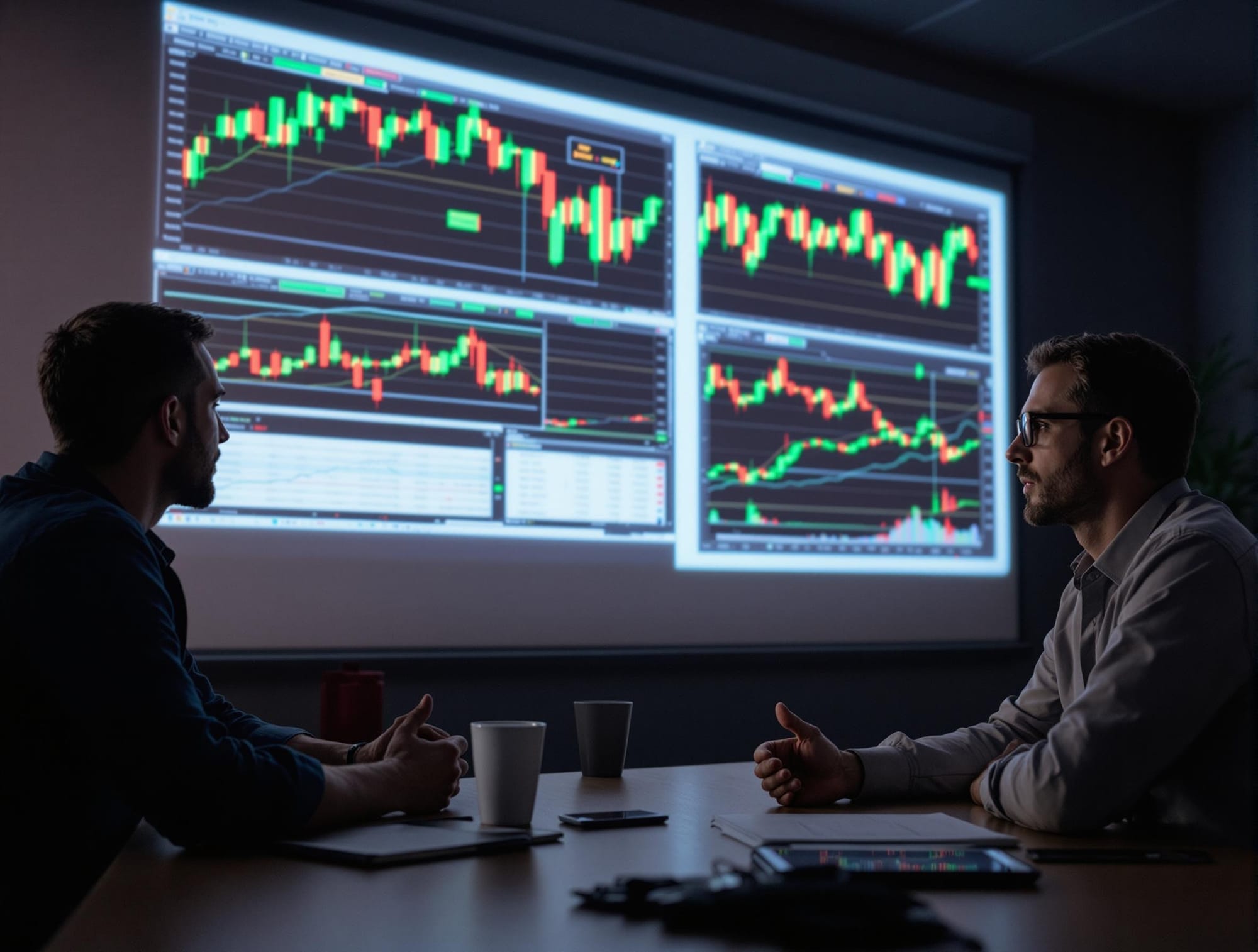How to Invest in Copper Futures With Success

Copper is more than just a building material — it’s a barometer for the global economy. If you’ve ever wondered how to invest in copper futures, you’re not alone. As electric vehicles, green energy, and industrial demand continue to rise, copper has become a popular asset among traders seeking diversification and opportunity in commodity markets.
But investing in copper futures isn't as simple as clicking “buy.” Futures contracts come with specific requirements, risks, and strategies that differ from stocks or ETFs. For traders who understand the market, however, copper futures can offer strong leverage, liquidity, and profit potential. The key is to understand what drives the cost of copper, how the futures market works, and which trading approach fits your goals.
This blog will walk you through everything from copper price history to contract specifications and trading strategies. Whether you're evaluating if copper is a good investment, or just curious about the copper futures graph, you’ll leave with a clear understanding of how to get started successfully. And if you're not trading with your own capital, you’ll also learn how a funded account could be your smartest path forward.
Curious how other commodities work? Check out this breakdown of preferred trading platforms that are built for futures traders like you: Top-rated tools that work for futures.
Is Copper a Good Investment?
Copper plays a vital role in everything from construction and manufacturing to electric vehicles and renewable energy. Its broad industrial use gives it a unique profile compared to other commodities. When global economies expand, copper demand typically rises. That’s why it's often called "Dr. Copper" — it can diagnose the health of the economy.
Unlike precious metals like gold or silver, copper isn’t held as a reserve asset. Its value is tied to supply and demand fundamentals, making it more reactive to global economic cycles. That volatility can be a plus for futures traders looking for active markets.
What Drives the Cost of Copper?
The cost of copper fluctuates based on several major factors:
- Supply disruptions: Strikes, mine closures, or political instability in major producing countries (like Chile or Peru) can restrict supply and spike prices.
- Chinese demand: China consumes over half of the world’s refined copper. Shifts in its infrastructure or manufacturing policies greatly influence copper prices.
- U.S. dollar strength: Because copper is priced in dollars, a strong dollar can reduce global demand and push prices lower.
- Technological innovation: The rise of electric vehicles and green energy has created new long-term demand for copper.
Understanding these dynamics helps traders anticipate movements in the copper futures graph, making it easier to catch trends or hedge against volatility. For those looking to learn the rules of futures trading, check out this guide to essential trading requirements: Futures trading rules every trader should know.
Copper Price History and Market Cycles
To trade copper effectively, it helps to understand the historical context. Copper's price movements often align with economic growth, industrial demand, and global policy shifts. Studying copper price history and cycles can offer a roadmap for recognizing future trends.
Copper Price History: Major Highs and Lows
The copper price history is full of booms and busts. In the early 2000s, copper surged due to China's industrial expansion, climbing from around $0.70 per pound to over $4 by 2008. However, during the global financial crisis, it plummeted below $1.50. By 2021, copper soared again, touching nearly $4.75 per pound amid post-pandemic recovery and surging demand for green energy infrastructure.
Each major high or low usually coincides with key macroeconomic events. The crash in 2016, where copper fell below $2, reflected slowing global growth. Studying these price shifts helps traders forecast possible future moves. Understanding how much does copper cost historically can also help when evaluating entry points.
For more on how traders time these movements, explore strategies that match each market phase: Learn how our traders approach different market phases.
Copper Price Prediction: What’s Next?
The copper price prediction landscape is driven by supply constraints and expanding demand, especially for electric vehicles and solar projects. Experts from Goldman Sachs and Bloomberg have suggested copper could exceed $5 per pound by 2026 due to chronic underinvestment in mining.
Using technical indicators and fundamental analysis, traders look for price breakouts and volume spikes to anticipate the next leg. Understanding global economic data, like Chinese manufacturing output or U.S. interest rates, can sharpen these forecasts. For deep dives into these concepts, Investopedia remains a top source for metals education.

How to Invest in Copper Futures
Copper futures give you leveraged exposure to copper's price without needing to own the metal. If you're wondering how to invest in copper, futures contracts are among the most direct and flexible options.
What Is the Best Way to Invest in Copper?
The best way to invest in copper depends on your risk tolerance and strategy. For active traders, copper futures are ideal. They offer liquidity, 24-hour trading, and tight spreads. The copper futures symbol on the CME is HG, and each contract represents 25,000 pounds of copper.
Unlike stocks or ETFs, futures allow you to go long or short with ease. That means you can profit in both bull and bear markets. Many successful traders choose funded accounts to trade copper without putting up margin themselves. Funded accounts also help you focus on building consistency: Explore the account options that support metal traders.
How Do You Invest in Copper Without Buying Physical Metal?
If you’re asking, "how do you invest in copper" without the hassle of storage, the answer lies in paper assets:
- Copper futures contracts
- Copper-focused ETFs (e.g., CPER)
- Mining stocks like Freeport-McMoRan
- Commodity mutual funds
These options provide diversified exposure to copper's price. Of them, copper futures contracts are the most responsive to real-time price moves and offer strategic advantages for traders.
Copper Futures Contract Specs You Should Know
If you’re serious about trading copper, you need to understand the mechanics. Let’s break down the copper futures contract specs so you can plan your trades with precision.
How Much Does Copper Cost Per Contract?
The cost of copper per futures contract is based on current price times the contract size. With each standard contract covering 25,000 pounds, and copper trading at $4 per pound, the notional value is $100,000. Traders only need to post margin, which usually ranges from $4,000 to $6,000.
If you're trading through a funded account, you can bypass that capital requirement and still access full-sized trades. Check which platforms support copper trading: See which platforms are supported for copper futures.
Can Beginners Trade Micro Copper Futures?
Yes—micro copper futures are perfect for beginners. These contracts represent 2,500 pounds (1/10th the standard size) and lower both risk and margin requirements.
They’re ideal for learning technical setups and managing smaller accounts. They use the same copper futures symbol (HG) and trade on the same platforms, making them an excellent training ground before scaling up.
Copper Futures Graph: Reading the Chart Right
Using a copper futures graph is essential for spotting entries, exits, and trend reversals. Technical analysis offers real-time insight that helps you stay ahead of major price shifts.
Which Indicators Work Best for Copper?
Successful copper traders use a mix of momentum and trend-following tools:
- RSI and MACD to spot overbought or oversold conditions
- Moving averages (50-day, 200-day) to confirm trends
- Volume Profile and VWAP for identifying institutional activity
Copper often reacts to macroeconomic events. Pairing your indicators with news flow, such as U.S. inflation data or Chinese exports, helps improve timing. Sites like CME Group provide real-time data on copper contract activity.
How to Spot Trend Shifts on the Copper Chart
Trend reversals in copper often start with divergence between price and indicators like RSI. A falling RSI while price makes new highs is a red flag. Also, look for failed breakouts and declining volume at highs.
Using multiple timeframes and tracking support/resistance zones helps build conviction. Many traders apply these methods successfully in both day and swing strategies.
Day Trading vs Swing Trading Copper
Copper offers ample opportunity for both day and swing traders. Your style depends on your time commitment and strategy.
Day traders capitalize on short-term volatility, especially during economic releases or market open. Copper is highly liquid, which means trades can be executed quickly with low slippage.
Swing traders focus on multi-day trends driven by supply data, infrastructure bills, or macro cycles. They might hold trades for days or weeks based on technical patterns or price levels. Each approach has pros and cons, but both can work within a funded account structure.
To trade either style confidently, use a firm that supports short- and long-term strategies: Check out this funded account structure that supports both.
Copper Investment Alternatives
Wondering, "is copper a good investment" if you're not into futures trading? You're not alone. Fortunately, there are alternatives for building a solid copper investment portfolio.
How to Invest in Copper Without Trading Futures
If you prefer passive investing, you can invest in copper through ETFs, mining stocks, or mutual funds:
- CPER (United States Copper Index Fund)
- Global X Copper Miners ETF
- Individual stocks like BHP or SCCO
These assets track the price of copper or the performance of companies involved in copper production. They’re perfect for portfolios focused on growth and diversification.
Best Way to Invest in Copper for Long-Term Gains
For long-term investors, the best way to invest in copper is through ETFs and large-cap mining companies. These options offer less volatility than futures while capturing upside from copper demand.
With the rise of electric vehicles and renewable infrastructure, copper demand is set to climb. Long-term investors are eyeing this trend for years to come.
Why Funded Accounts Are Perfect for Copper Futures Traders
If you want to trade copper but don’t have the capital, funded accounts offer the perfect solution. They allow you to trade copper with the firm's money while keeping a percentage of the profits.
How to Buy Copper Futures Using a Funded Account
To buy copper futures using a funded account, traders first pass an evaluation phase by meeting profit targets while staying within risk limits. Once funded, you gain access to capital and trade copper futures just as you would with your own account.
This lets you trade the copper futures contract without needing to post margin. You keep up to 80% of the profits, and the firm absorbs the downside.
Most funded programs support platforms like Rithmic, EdgeproX, and NinjaTrader, making execution seamless.
Who is the Right Candidate for Trading on a Funded Account?
If you have a working strategy and understand risk, you’re likely a great candidate. Funded accounts are ideal for:
- New traders looking to prove their skill
- Traders without access to large capital
- Anyone seeking to scale trading without added financial pressure



